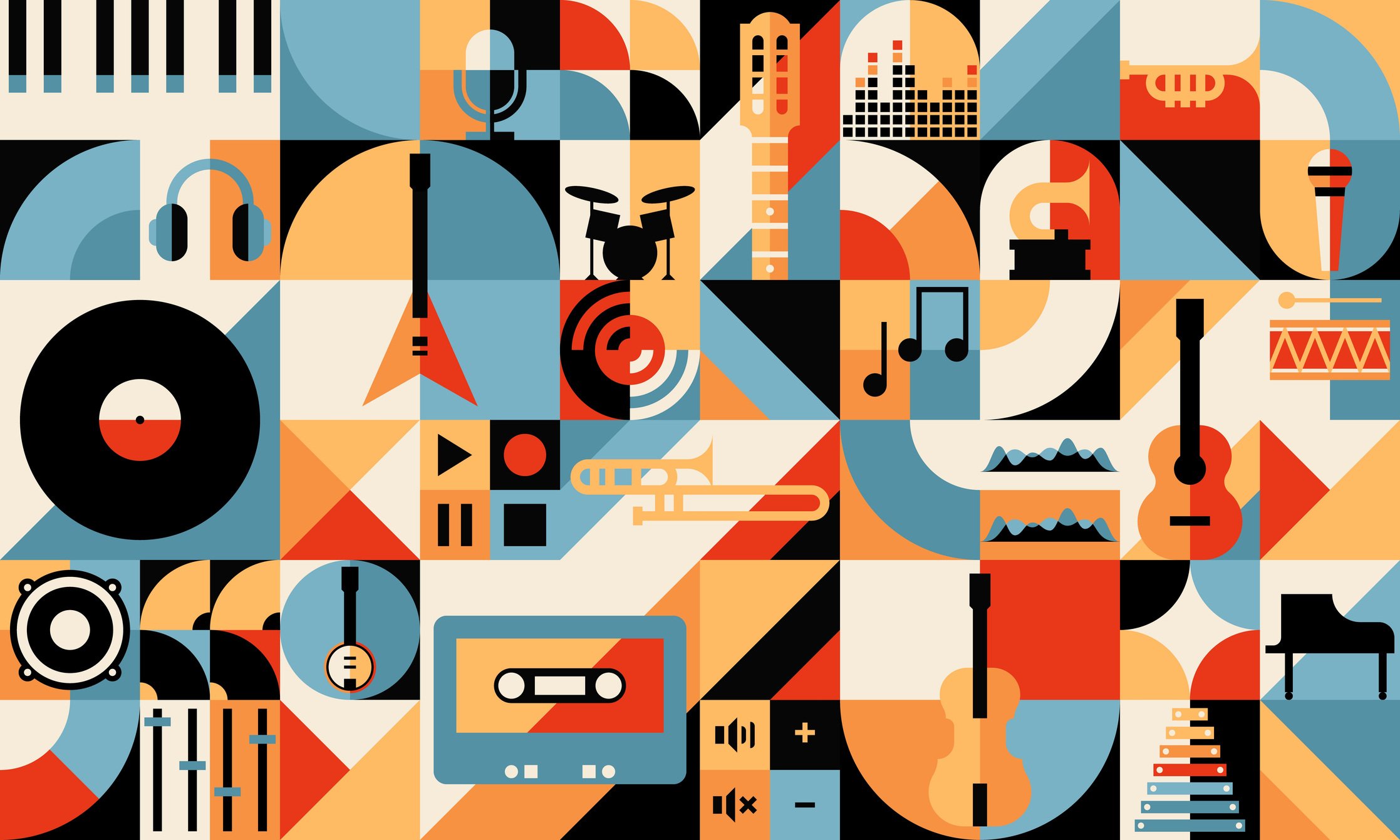Adding Music to Your Playground
Posted by May Recreation Content Team on

Hit all the right notes with musical elements
Adding music to your playground can help create engaging, fun spaces that encourage multi-sensory play and support the holistic development of children.
“Unstructured play on the playground gives children the opportunity to explore, discover, experience, learn, and develop the imagination. Music further stimulates a child’s curiosity, encouraging them to discover new sounds, new rhythms, wonder how a sound is made, and so much more,” explains Karen Herren in Playground magazine.
May Recreation owner Randy May likes to say that “music is a universal language everyone can create”, which is why his company offers Percussion Play’s outdoor instruments which can bring music to any outdoor space.
Music Can Be a Key Component of Inclusive Playgrounds
Indeed, adding musical elements to your existing playground, or including them in your new playground design, can help make your playground inclusive and accessible to all.
“Playgrounds are typically designed for active kids who are jumping, running, and climbing. This can make it difficult for kids of other abilities to join in the fun. Musical instruments are an alternative solution. They are a leveler between different abilities. Children with a disability can participate with those who are able-bodied,” writes Herren.
And regardless of a child’s physical abilities, musical elements can help strengthen mental and social development.
“Adding musical elements to an outdoor playground provides a unique and enjoyable way for kids to enjoy the outdoors and can have many positive effects on their development,” says Miracle Recreation. “A musical playground encourages sensory play, which is essential to a kid’s development and growth.”
Let’s look at the benefits of adding music to your playground, the types of musical components you can add, and design and implementation considerations when adding musical elements.
Six Ways that Music Aids Children’s Development
When we think of the sounds of playgrounds, we naturally call upon the joy of children’s laughter and playing together with peers, but music is another sound that can be found on successful playgrounds.
“Music is universal; it doesn’t differentiate between language or age. Musical instruments work in everyday circumstances; they can go anywhere, whether it is a park, playground, sensory garden, or street corner,” writes Herren.
We know from research that music can play an important role in the development of children, including these six ways highlighted by GreatSchools.org:
- Language Processing: Music training benefits the development of language-related skills such as vocabulary building and phoneme processing according to multiple studies.
- Memory: A study found that children with musical training showed better verbal memory than their peers.
- Math: Researchers have found a link between music education and success in school math.
- Self-Awareness: The precision and attention required to play an instrument encourages self-awareness.
- Social Skills: Participating in musical play with others helps develop shared memories and bonding experiences.
- Academic Success: Studies have shown that students in music programs scored higher than their peers on the SAT college exam testing.
“Musical instruments stimulate the sense of hearing during play and allow kids to process sounds. Kids can learn to sort through multiple sounds and interpret what they hear — from other kids playing around them to the sounds made by the musical instrument "says Miracle Recreation. “They can also express themselves creatively by combining movement with music to improve their physical abilities.”
Benefits of Musical Playgrounds
There’s no argument that musical play stimulates brain activity and enhances learning abilities of children, but this cognitive development is just one of the benefits of musical playgrounds. Other benefits include:
- Sensory Development: Musical instruments provide auditory stimulation and help children process sounds.
- Social Skills: Collaborative music-making encourages teamwork and social interaction.
- Emotional Expression: Music allows children to express themselves creatively and emotionally.
- Inclusive Play: Musical elements create opportunities for children of all abilities to participate.
Adding music to your playground is about open play where no musical training is needed. Any combination of instruments can be played together with a joy that comes with knowing that there are no wrong notes when you are having fun by yourself or with others.
“Music is a universal language everyone understands. Experiencing music in the great outdoors is a fantastic way to promote better community engagement by bringing people together,” says Miracle Recreation. “Designing a dedicated kids’ outdoor music playground or music park in your community or neighborhood is a fantastic project to take on!”
Types of Musical Instruments You Can Add
There are many different types of musical instruments you can add to your playground including:
- Percussion Instruments: These are instruments that produce sound when struck, shaken, or scraped. They are ideal for playgrounds because they're robust and create immediate, satisfying sounds. Examples include:
o Drums: Large, sturdy drums that can be beaten with hands or soft mallet.
o Xylophones: Metal or wooden bars that create melodic sounds when struck.
o Metallophones: Like xylophones but made entirely of metal.
o Bongos: Paired drums of different sizes that create varied tones.
o Tambourines: Handheld instruments with metal jingles that create sound when shaken or tapped. - Chimes and Bella: These instruments produce sounds through vibration when struck or moved by wind or touch. They offer a more delicate, resonant sound and can create a peaceful atmosphere:
o Wind chimes: Hanging tubes that create melodic sounds when moved by wind.
o Tubular bells: Large metal tubes of varying lengths that produce different pitches.
o Hanging bells: Individual bells that can be rung by children.
o Musical rails: Bars that create different tones when touched or struck. - Stringed Instruments: While more delicate, some specially designed stringed instruments can work in playgrounds:
o Large, fixed harps with durable strings.
o Oversized guitar-like structures.
o Instruments with thick, resilient strings that can withstand outdoor conditions. - Pneumatic Instruments: These use air to create sound and can be particularly engaging:
o Pipe organs create sound when air is blown through them.
o Wind-activated musical structures.
o Instruments that make sounds when children blow or create air movement. - Rhythmic Noise Makers: Simple, durable instruments that create interesting sounds:
o Rain sticks.
o Spinning sound wheels.
o Percussion wheels that create sounds when rotated.
o Large shakers or maracas fixed in place. - Electronic Sound Installations: Modern playgrounds might incorporate:
o Solar-powered musical stations.
o Interactive sound panels.
o Digital sound boards with pre-programmed musical elements.
Design Considerations for Adding Music to a Playground
Playground designers should consider utilizing the pentatonic scale when creating their music playground as this enables those with all levels of music comfort and talent to enjoy playing the instruments.
“Because the notes of the pentatonic scale are harmonious in whichever order they are played they are great for developing musical technique and building the confidence of inexperienced or very young musicians. Since it is impossible to play a ‘wrong’ note, anyone and everyone can create music that sounds good- which is important for those who struggle with anxiety or an initial lack of confidence,” says Percussion Play.
The pentatonic scale is a five-note musical scale commonly used in folk music, blues, and rock. The major pentatonic uses the 1st, 2nd, 3rd, 5th, and 6th notes of a major scale to create a simple, pleasant sound that works well for melodies and solos.
“The easiest way to discover the pentatonic scale is on the piano because it is easy to visualize the five notes. If you begin by playing the black keys one after the other, you will hear the sound of the pentatonic scale,” explains Percussion Play.
When designing a musical playground, besides utilizing the pentatonic scale, also consider these factors:
- Accessibility: Instruments should be at appropriate heights for children of all abilities.
- Durability: Musical elements should be designed to withstand outdoor conditions in your climate and heavy use.
- Layout: Consider the placement of musical elements within the overall playground design.
- Themes: Incorporate music-themed custom features and graphics throughout the playground.
Implementation Strategies for Your Musical Playground
How you implement your musical playground depends on if the music is being added to an existing playground or designed from scratch for a new playground.
For existing playgrounds consider:
- Existing Structures: Add musical instruments such as sound panels, chimes, and drums to existing structures or walls on your playground.
- Unused Spaces: Examine unused spaces in your playground and add musical elements. Look for open space along walking paths or existing areas under platforms or other play structures.
- Freestanding Equipment: Consider standalone instruments like percussion play that can complement existing play structures.
Designing a new playground that features music requires involvement of local parents, children, business leaders, and other stakeholders from the start.
Community members, especially children (your target audience!) should be involved in the design process. Seek inspiration from existing musical playgrounds with online research, or visits if those facilities are in your local area.
A partner like May Recreation can help your organization create a music playground from project design to financing to installation. Contact May Recreation today to learn how adding music to your playground can enrich your community.
